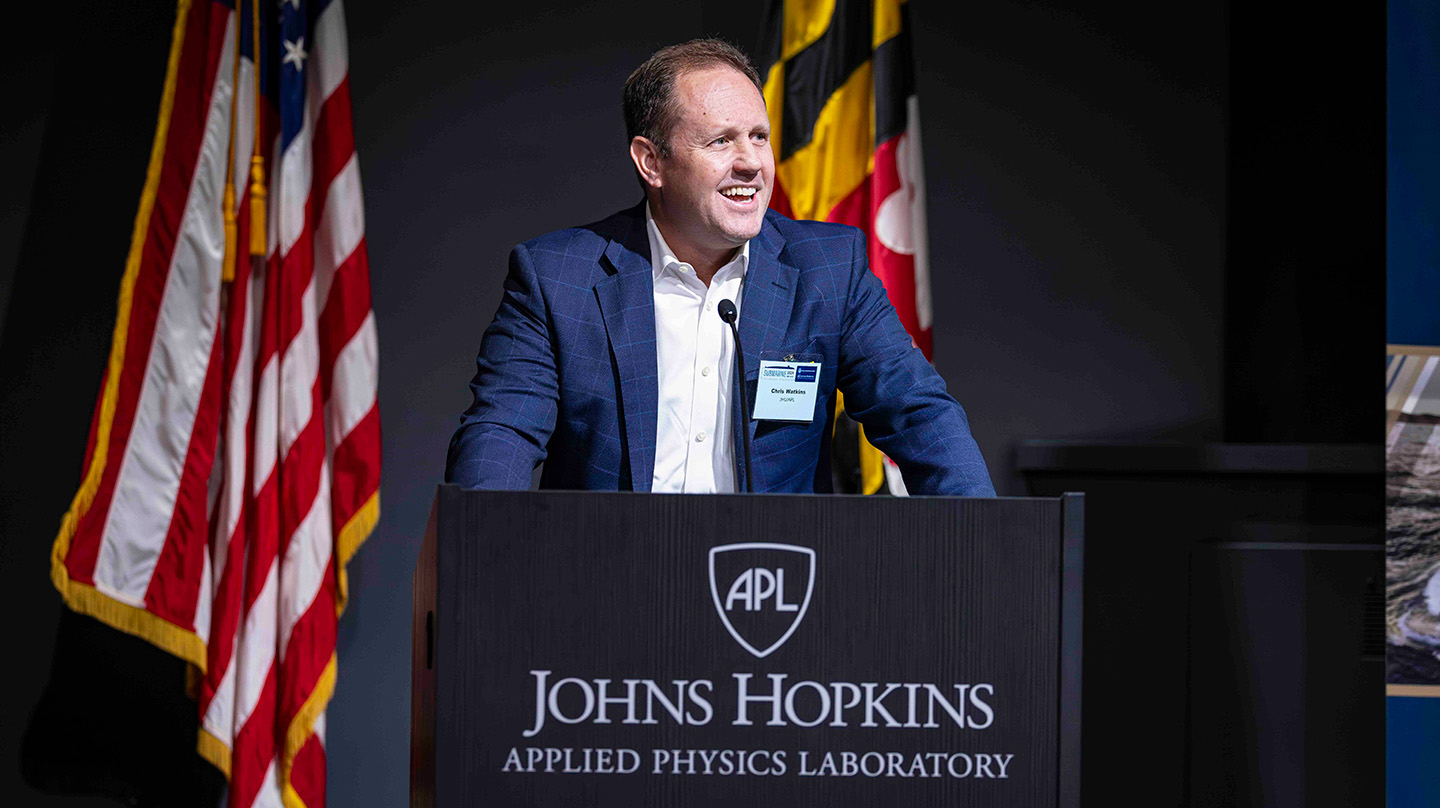News
Submarine Technology Symposium at Johns Hopkins APL Prepares for Today’s Undersea Competition
“Today’s Competition … Tomorrow’s Fight” was the theme of this year’s Submarine Technology Symposium (STS), held May 14 to May 16, which drew a combination of Navy leadership, academic researchers and industry representatives to the Johns Hopkins Applied Physics Laboratory (APL) in Laurel, Maryland.
Co-sponsored by Commander, Submarine Forces, and the Naval Submarine League and hosted by APL, the 36th annual symposium explored how technology developers are reacting to the evolving state of undersea and seabed warfare. Many speakers cited how, during the next few years and decades, the trilateral security agreement between Australia, the United Kingdom and the United States — known as AUKUS — will counter the aggressive growth of undersea capabilities among adversaries.
During his opening remarks, the symposium’s general chair, retired Vice Adm. Joseph Tofalo, set the tone that carried through the three-day event.
“How and where we are competing with adversaries is the undersea,” Tofalo said. “We have the ability to project power in our adversaries’ sphere of influence.”
In his own opening remarks, Chris Watkins, symposium co-chair and APL’s Sea Control mission area executive, said the AUKUS partners must recognize that their adversaries consider all facets of society to be in play in the current great power competition.
“China seeks not only to dominate in economic and military power, but also in political and cultural spheres to attain primacy,” Watkins said. “In this symposium, we will explore the undersea part of this competition in detail.
“But, when the stakes are high, it helps to have friends,” Watkins said, referring to the AUKUS partnership.
As a signal of AUKUS’ continued importance to the undersea strategy of the U.S., the symposium included presentations from Australian and U.K. industry representatives. Previously, only AUKUS military members participated during select parts of the symposium.
STS Program Chair Ray Wiggin, assistant program manager for Submarine Mission Engineering and Future Technologies at APL, organized the lineup of sessions and speakers. Nearly 700 members of the submarine force, defense industry, acquisition and research communities attended and participated in the five sessions:
- “Enabling the Undersea From Seabed to Space,” chaired by Scott Osterman from Naval Undersea Warfare Center, Division Newport, and co-chaired by retired Capt. Jeff Hoyle from Elbit Systems of America
- “Enhancing Undersea Access and Lethality,” chaired by Michael Diggs from Huntington Ingalls Industries’ Newport News Shipbuilding and co-chaired by Tom Northardt from BAE Systems
- “Seabed Warfare … the Next Domain,” chaired by Mark Allen from The Applied Research Laboratory at Penn State University and co-chaired by Justin Reid from General Dynamics Mission Systems
- “Strategic Forces … Deterring Tomorrow’s Fight,” chaired by Karen Conti from Epsilon Systems and co-chaired by Robert W. Thomas Jr. from Lockheed Martin
- “Partnering to Prevail,” chaired by APL’s Josh Smith and co-chaired by Joe Petrucelli from Systems Planning & Analysis
STS also welcomed several speakers from the senior levels of the Department of Defense, Congressional Budget Office and Department of the Navy. Offering remarks were: Under Secretary of the Navy Erik Raven; Adm. William Houston, director of Naval Reactors; Vice Adm. Robert Gaucher, commander of Submarine Forces; Vice Adm. Johnny Wolfe, director of Strategic Systems Programs; Senior Advisor to the Secretary of Defense for AUKUS Abraham Denmark; Dale Rielage, director of the Office of Secretary of Defense Red Team; Eric Labs, senior analyst for Naval Forces and Weapons at the Congressional Budget Office; and Rear Adm. Richard Seif, commander of Submarine Force Pacific.
This was Tofalo’s last year as STS chair, a role he has filled since June 2020. Retired Rear Adm. Lorin Selby will serve as the chair for STS 2025.
